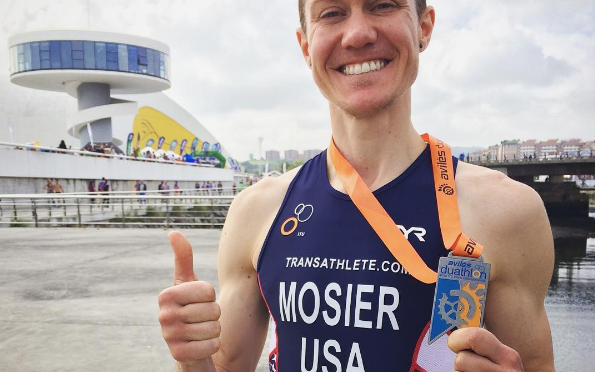“I want to be the person that I wish I had when I was younger. I want to be the person that I wish I could look to so that other people can see me and know that it is possible to be transgender and live an awesome and happy life. That it is possible to be your authentic self and continue to play the sports that you love and not have to negotiate parts of your identity, not have to give anything up, and that you really can just be who you are and be true to yourself and still play sports and still live happy lives.”
Being first is the goal of every athlete, but it’s a goal few achieve. Being first is the result of continuing to work when you are exhausted and weary, believing in yourself when nobody else does, and exceeding all expectations. There is a heavy price to pay in order to be first, a price Chris Mosier knows all too well. As a triathlete and duathlete Mosier has come in first in many races, but his greatest accomplishments are the other firsts for which he will be remembered. He is the first transgender athlete to represent the United States in international competition, the first athlete to compete in an Olympic trial in a sex different to him than the one assigned at birth, and the first trans athlete to feature in the ESPN Body Issue.
Growing up in Chicago, Chris Mosier knew he wasn’t like the boys in his neighborhood, nor was he like the girls in the neighborhood, he just sort of felt like himself. People thought it was okay for him to be a “tomboy” when he was young, but as he got older adults were always correcting him and his peers shamed him. He was told the way he was behaving wasn’t right or appropriate for a girl. However when it came to sports things were a little different. He has said, “No matter how weird or strange people thought I was in my day-to-day life, they loved and accepted me when we were playing sports because I was a good teammate, I was a strong leader and a great athlete.”
Mosier began competing in triathlons as a female but didn’t feel comfortable. He says “The process of me really understanding my identity and who I was coincides directly with me becoming a better athlete. I realized that I felt most like myself still participating in sports. I didn’t want to lose that by transitioning.” Then in 2010 he realized he couldn’t go on living a lie, he had to be true to himself. He said, “Fears of losing sport, friends, job, housing, or my relationship meant nothing because I literally thought I wouldn’t be here next year if I didn’t change something.”
When he won his first race as a male, many people were surprised because they didn’t think he would even be competitive. A couple days after that race, the man who came in second contacted Mosier to tell him that he raced well and it was cool what he was doing. That’s when Mosier knew sport could break down barriers. Since then he has been an activist for trans athletes. He was at the forefront of the International Olympic Committee changing their rules on trans athletes. He has worked with You Can Play, Point of Pride, and Go! Athletes. He is also the founder of transathlete.com, which is a resource for students, athletes, coaches, and administrators to find information about trans inclusion in athletics at various levels of play. In 2019 Nike produced “The Chris Mosier Project” to tell his story in an effort to give others hope and bring about further acceptance of all athletes in sports.
“The opportunity to be able to participate in sport opens up the possibility for individuals to be themselves. In the transgender movement relative to sport, Chris Mosier has done a great job of getting himself out front, which is important. That’s how the message gets out.”
Barry Siff, President USA Triathlon
